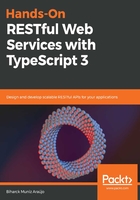
Foreword
REST has been around for many years, so why should someone write a book about it now? In our book, Building Evolutionary Architectures, we described the software development ecosystem as a dynamic equilibrium—equilibrium because all the pieces fit together, but dynamic because any part (technology, technique, tool, framework, library, and so on) can change at any time. Given that architects and developers work in such a volatile environment, it is useful to revisit technologies that are still used on a continuous basis because we constantly figure out new ways to apply useful technologies.
REST certainly qualifies as a popular technology that continues to gain traction. Just like all other active software tools, the tools and approaches evolve over time, which makes this book a timely addition to the corpus of books relating to REST. The author does a terrific job of establishing the technology underpinning REST, but there are also chapters discussing how the use of this protocol has evolved over time, including numerous best practices regarding how real teams use REST and related tools to solve real problems.
This book is well organized, dividing its time between critical academic definitions (REST came from academia, after all) and practical advice on how to apply it. For example, Chapter 2, Principles of Designing RESTful APIs, provides an excellent overview of how teams use REST for different purposes, and not just how the bits wire together.
I think this book will become a valuable addition to developers' libraries. It serves as both an excellent introduction and overview, but also as a fantastic reference book for establishing best practices and other enduring advice. Congratulations to Biharck for writing a clear and compelling book on a complex subject and its related ecosystem.
Neal Ford
Director / Software Architect / Meme Wrangler at ThoughtWorks